First mentioned in November at the extreme beginning of the season and now in full force are wild radishes and mustards. When I went last week to Gainesville for the Florida Earth Skills annual event I saw fields of ready-to-eat wild radish. (We have wild mustard here but it is far less common.) One can confuse Wild Radishes and Wild Mustards but as they are used the same way either will do. Generally said Wild Radishes have yellow four-petal flowers on individual stems, noticeable veins on the petals, have jointed toothpick-like seed pods, and would be tall except they tend to get scoliosis, that is they bend over and twist around staying low to the ground. Wild Mustards have yellow four-petal flowers in clusters, do not have noticeable veins on the petals, have smooth toothpick-like seed pods and grow several feet high. I usually pick a large bag full then haul them home for greens. They tend to grow in gritty soil so washing is essential as sand is not a nutrient. I chop them, wilt the mass in a big pot with water for steam and a little pork fat for flavor. Some balsamic vinegar and olive oil and you are set to go. The roots are also edible. Peel off the outer jacket (it will come off in one piece reducing the size greatly) and then boil the smaller inner core. The house will smell. However, they cook up well, not too tender but peppery. Certainly edible. To read about Wild Radishes click here , Wild Mustards click here.
? Heavy gloves are essential if you are going to eat cactus, which I have been doing a lot lately. In fact I am totally overrun with young nopales. About a decade ago I found one nopales pad on a sidewalk in Daytona Beach while attending a Greek festival. I brought it home and now it is an edible pest. I can’t possibly keep up. The key to cactus consumption, if I may make an alliteration, is young and tender. The younger the pad the more tender it will be and less rank in flavor. I find pads four inches or shorter to be excellent. Between five and six inches they are still edible but beginning to develop fibers. Larger than that they become woody. When short and young many of them don’t have spines or glochids yet, but some do hence very heavy leather gloves. Scraping the pads under a flow of water removes any spines and particularly the glochids, tiny tufts of short hair-like spines that can make one miserable. (Duct tape is pretty good at pulling them out.) I usually cook nopales one of two ways, julienned in stir fries or grilled whole. The only issue I have with grilling them is they turn from a bright deep green to a jaundiced yellow. I’ve had grilled nopales in restaurants and somehow they cooked them and retained their color. I’d like to find out how they do that. To read more a cactuses click here.
? The evolution of a garden. For some 10 years I grew the typical garden, cukes, tomatoes, beans and the like. In fact I was something of an organic fanatic about it. Then a huge oak tree landed in my pool destroying a good part of the garden in the process. For a season the garden got ignored and grew up with … weeds. Now my garden is somewhat different. My two plants of interest are the Winged Yam and the Milkweed Vine, easy to trellis and each producing a lot of food. Add sweet potatoes to the mix — Ipomoea batata — and the backyard garden become a significant source of food, at least in this climate. So yes, I have the usual culprits growing but more room has been made for the staples. And since Valentine’s Day is our last average frost date the Milkweed Vine should make it through the winter. It’s ever bearing if not frozen. It produces a fruit that looks like a 2/3 size chayote, darker in color with a flavor that is like a potato and zucchini combined. The winged yam which dies back between Christmas and St. Patrick’s Day, is essentially a huge potato. Both must be cooked. The sweet potato is totally edible raw or cooked, roots to leaves though usually both are cooked.
? Recently added articles: Yaupon Holly, Edible Flowers: Part Fifteen
? Green Deane Forum Update: The forum has been open for posting for just over two weeks now. After seeding it with some posts it has taken on critical mass and is now self-sustaining. As I write there are 825 posts, 172 topics, and 182 members. The only odd thing so far is that it is 27 to 1 male to female. So ladies, if you are looking for a plant guy there is a meet and greet board. Darryl Patton, an herbalist in Alabama, Marabou Thomas, a permaculturist in Florida, and FeralKevin, a sustainable champion in California have been most helpful in lending their topical expertise. I want to publicly thank them. Most popular thus far is “What is It? where we try to identify plants folks have discovered. I think we’re close to 100% so far. Least visited thus far, vegetarianism. If you can think of a board to add, let me know. To visit the forum click here.
What a week for classes. It was 37º F at 9 a.m. for my class on the 12th and 68º F at 9 a.m. on the 19th. Our Tampa class included Diane, a botanist and grass expert. She made the class so much better. In Melbourne we had a nice little find of a ground cherry and later some smart grass. And we found a surprise in Mead Garden, a bull thistle. Haven’t seen one there ever but they’ve been clearing and bringing in machines and dirt and there it was, a first year rosette. We were also joined at Mead by Fran, herbalist, which always make a class more interesting. I don’t get much of a chance to be a student so it’s always nice to have a specialist along. I’m on the road for the next two weeks, Ocala and Gainesville, then Cassadaga and Port Orange. Let’s hope the weather holds. Speaking as a gardener as well, I will predice one more cold snap near the next full moon, and then winter will be over.
Upcoming Foraging classes:
Saturday, February 25th, Jervey Gantt Recreation Complex, 2390 SE 36th Ave., Ocala, 9 a.m.
Sunday, February 26th, Boulware Springs Park, 7902 S. E. 15th St., Gainesville, 9 a.m.
Saturday, March 3rd, Colby-Alderman Park: 1099 Massachusetts Street, Cassadaga. Fla, 9 a.m.
Sunday, March 4th, Spruce Creek Park, 6250 Ridgewood Ave. Port Orange, 9 a.m.
? A reminder: On the weekend of March 23-25 there will be a large herbal conference in Ocala. I will be presenting as will several others more august than I. Because you subscribe to my newsletter you can get a discount. If you register using the code EATTHEWEEDS you will receive a 20% discount off of registration. To register, or learn more, visit www.FloridaHerbalConference.org. See, there are benefits to being involved. March is a wonderful time for plants and people in Florida. Here’s what you need to know and some highlights:
The Florida Herbal Conference is March 23-25 in Ocala at Camp Kiwanis located in the national forest. Teachers from around the state will gather to share their wisdom and experience about herbs and healing. Participants can choose from over 30 workshops, plant walks, and classes throughout the weekend, ranging from Clinical Herbalism to Kitchen and Garden medicine. Relax with recreational activities such as dance, henna, yoga, singing, canoeing or just unwinding under graceful live oaks. Enjoy evening musical performances by In Curses and Surcular Souls. Find treasures and necessities from artisans and crafters in our Herbal Marketplace. Take home memories and new knowledge. Special keynote speaker is the renowned herbalist Rosemary Gladstar who will inspire and enliven you, making this an event you won’t want to miss or forget. The conference is hosted by the Florida School of Holistic Living. Camping is included in registration, indoor lodging is also available. Proceeds benefit United Plant Savers, and all participants will receive membership when they register for the conference. Register using the code EATTHEWEEDS and receive a 20% discount off of registration. To register, or learn more, visit www.FloridaHerbalConference.org.
? For what its worth: Male ducks don’t quack. Only female ducks quack, male ducks “whisper.” Thus whenever you hear a “quack” it is a she. And… the easiest way to catch park ducks… is with a cast net. Incidentally, ducks, unlike chickens, will lay their egg where ever they are, unless sitting. Whereas a chicken will always lay in the same place, a duck will drop an egg whenever so moved. So if you want duck eggs and you raise ducks you have to keep them enclosed until they lay for the day.
On a personal note I have raised chickens and ducks. Of the two, ducks have far more personality and are more engaging than chicklings. Admittedly watching a chicken grub for bugs is entertaining but ducks are an intellectual cut above, and precocial which chickens are not, being altricial. (Baby ducks can pretty much take care of themsevles, whereas baby chicks need nurturing.) My favorite ducks were Khaki-campbells, good layers who don’t need a pond of water to propagate. You can read about these ducks here.
To donate to the Green Deane Newsletter click here.

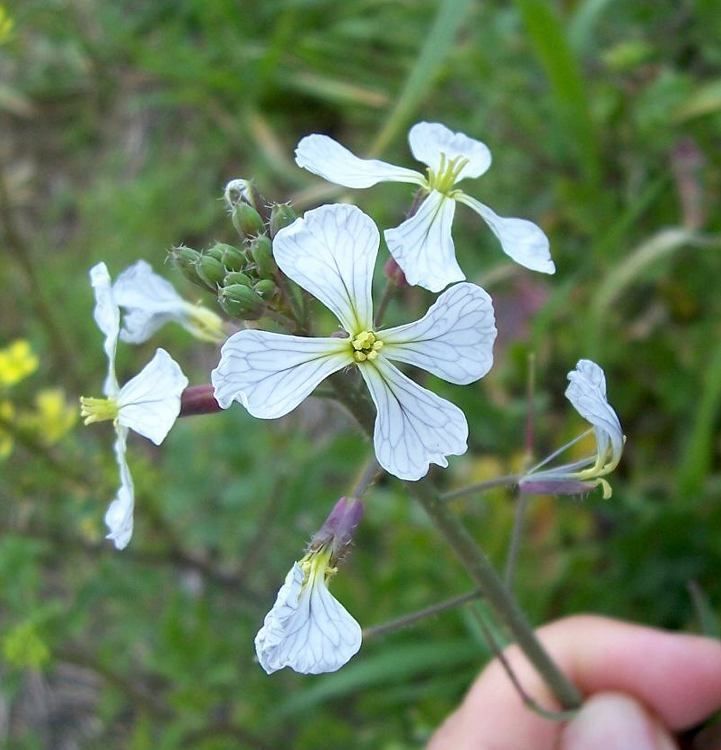
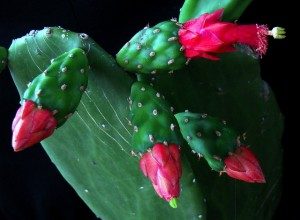
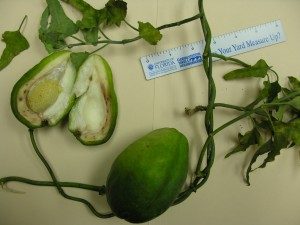

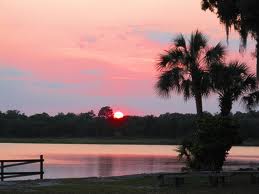
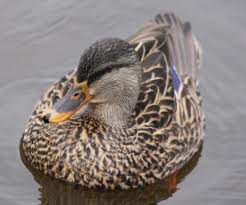

love what you do green dean i was wondering do you ever come down to west palm beach and hold classes here and if you do kindly please let me know thank you so much green dean your the best!!!!
I have classes there about every six weeks. See my schedule and/or recommend a date.
I also want to see you back in West Palm Beach, haven’t seen it on the schedule for a while. I will be there for the next one. Love your new website and newsletter.
How about in a month, or or less?
I think I could make it March 17/18 or any weekend after the herbal conference.
YOu mean West Palm Beach?
Have you ever thought about doing a class in the Everglades?
Yes, and I do have classes in nearby Port Charlotte.
Your Milkweed Vine Fruit, looks an awfully like an avocado? Any similarity?
Thanks for you newsletter and the GREAT Videos.
No, the Milkweed Vine fruit has a taste that is a combination of potato and zucchini
Just getting started trying to figure out what is edible and afraid of getting hold of wrong foods. Is there a place one can buy starts to plant on their own land to be sure of getting the right plants?
Not really… sounds like a potential business…